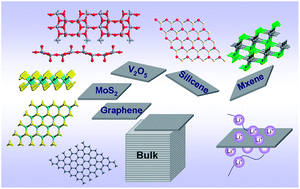Graphene, inorganic graphene analogs and their composites for lithium ion batteries
Abstract
In recent years, two-dimensional (2D) materials, including graphene and inorganic graphene analogs (IGAs), have been the subject of intensive studies due to their novel chemical and physical properties. With apparent high surface-to-volume ratio, 2D materials are promising electrode candidates for lithium ion batteries (LIBs). Compared with three-dimensional bulk crystals, 2D materials have superior structural characteristics, and thus can exhibit higher specific capacity and better high-rate stability. In particular, composites consisting of graphene and IGAs could have enhanced electrochemical performances due to the specific synergic effects, which open up new frontiers in fundamental science and technology. Although the explorations of using IGAs for lithium storage have begun very recently, a timely overview in this field is necessary for developing improved electrode candidates. In this feature article, we summarize the ongoing efforts and studies from both experimental and theoretical communities on developing graphene and IGAs as LIB electrodes. Compared with graphene, we put more emphasis on IGAs, such as transition metal oxides, dichalcogenides, and MXenes, and illustrate the significant advantages of IGAs as electrodes. We also show that due to the effective synergic interactions between graphene and IGAs, their composites step further to achieve reversible high-capacity LIBs. Finally, we discuss the problems and limitations for the practical application of 2D materials to LIBs.


 Please wait while we load your content...
Please wait while we load your content...